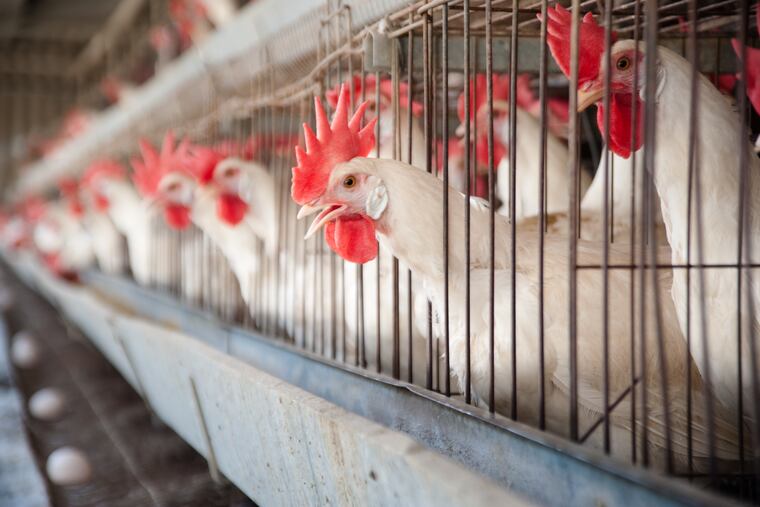Pennsylvania has 4.6 million fewer egg-laying hens due to avian flu
Big Lancaster County egg farms were hard it by avian flu. Building back is a slow process.

Lancaster County was among the places hardest hit by the devastating avian influenza that has led to the deaths of millions of laying hens and been a factor in the huge rise in egg prices. Pennsylvania, the fourth-biggest egg-producing state in the nation, has 4.6 million fewer laying hens than this time last year.
Only three other U.S. counties, one in Colorado and two in Iowa, have lost more laying hens in the last 10 months because of the highly contagious flu that is carried by wild birds and periodically jumps over to commercial flocks.
Pennsylvania last had infected flocks in November, but it’s too soon to say whether the outbreak has run its course. Last week two commercial flocks, turkeys in Virginia and broilers, or meat chickens, in Tennessee got the virus and were destroyed.
“I’m very nervous. We’re back into the migration” season for wild birds, said Chris Herr, executive vice president of the Penn Ag Industries Association. “Clearly this virus is moved around by wild birds, and I’m sort of bracing for what might happen coming up this spring.”
The worst outbreak yet
The current outbreak is the worst in U.S. history, with 57.9 million commercial birds affected, three-quarters of them laying hens or younger hens destined to become layers, according the USDA. That total has surpassed the figure from an outbreak in 2015, which affected 50.5 million commercial birds.
The 2015 flu outbreak spared Pennsylvania chickens, but the influenza that was first identified last February in Indiana slammed three large Lancaster County farms within five days of each other last April. There are 300 poultry farms in Lancaster County, according to Gregory P. Martin, an educator at Penn State Extension who help farmers keep up with best practices.
Only a few of those farms got the got the virus, Martin said. Those that did were very large, “so it was still catastrophic,” he said.
Jokes aside ...
For all the consumer anguish and social media jokes — about hens unionizing or adorning themselves with expensive accessories, highlighted in a recent New York Times article about egg price memes — the hard truth about avian influenza is that it is extremely virulent.
The virus hit so hard in some flocks that most of the chickens were dead before the crews arrived to kill the birds as part of the containment strategy, Martin said.
“There were just a few birds left, and we went in there and finished the job, basically. That’s pretty sad,” he said. “It’s sad for the farmer, too. They had perfectly good birds one day, and now they’re dead.”
Slowly rebuilding flocks
Rebuilding flocks takes months. After the birds are killed, the houses sit empty for 28 days before they are cleaned and disinfected under a timeline set by the USDA, Martin said. Then it typically takes a week or two to clean and disinfect, he said.
Supply constraints restrict how quickly the chicken houses can be refilled.
The chicken supply chain starts with breeding flocks that produce fertilized eggs that are sent to hatcheries. After hatching, the young birds, called pullets, are kept in specialized chicken houses until they reach sexual maturity at 18 to 20 weeks. Then they are sent to the laying houses, most of which still have cages, where their eggs are collected.
The system doesn’t have a lot of extra capacity to make up for sudden, catastrophic losses, Herr said.
“It is a very structured, scheduled process,” he said. “The birds that start laying today, in 18 to 20 months you know that they will be going out the door, and their replacements are scheduled both with the hatchery and the pullet-raising operations.”
Officials at two of Lancaster County’s biggest egg producers, Kreider Farms and Esbenshade Farms, either were not available or declined to comment about progress they had made since their loss of their flocks in April.
Farmers and companies like Kreider and Esbenshade are eligible for federal compensation. Pennsylvania was the only state to launch its own program to compensate growers, including $25 million to replace lost income, Herr said.
“We’ve used about half of that money so far and are banking some of it for hopefully not using it this spring,” he said.